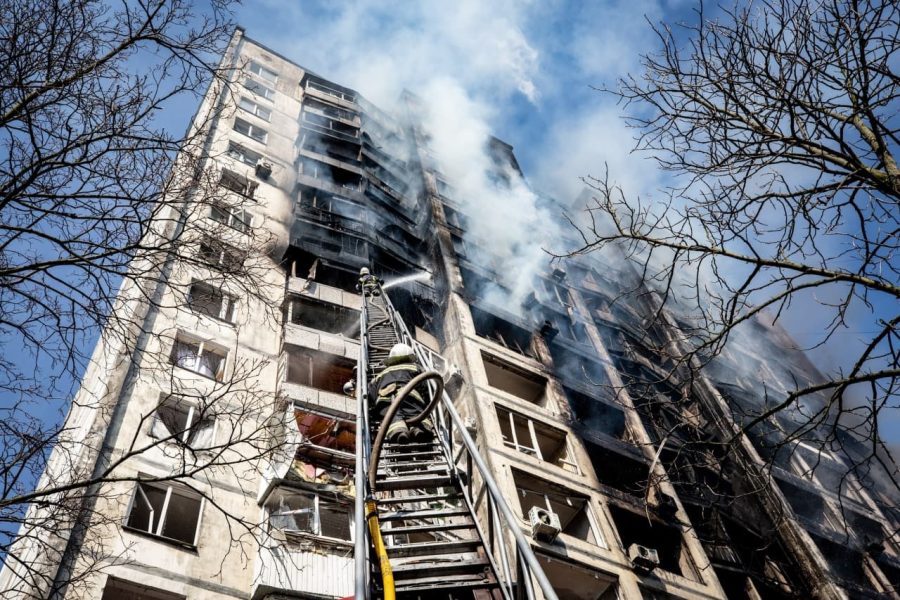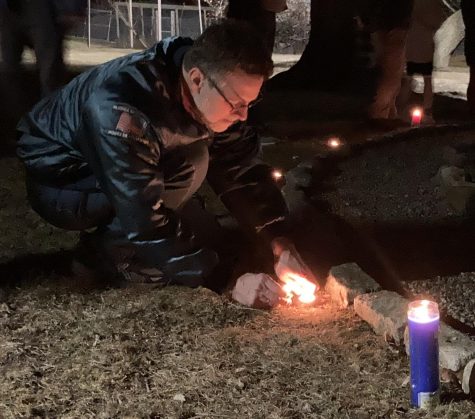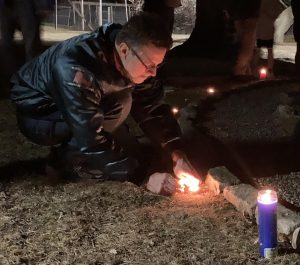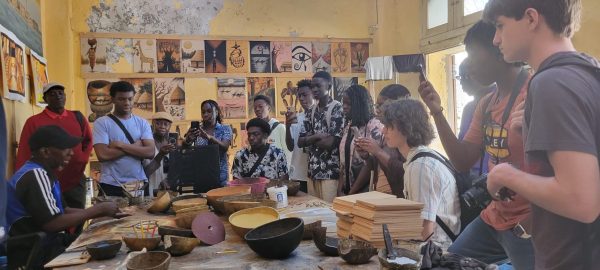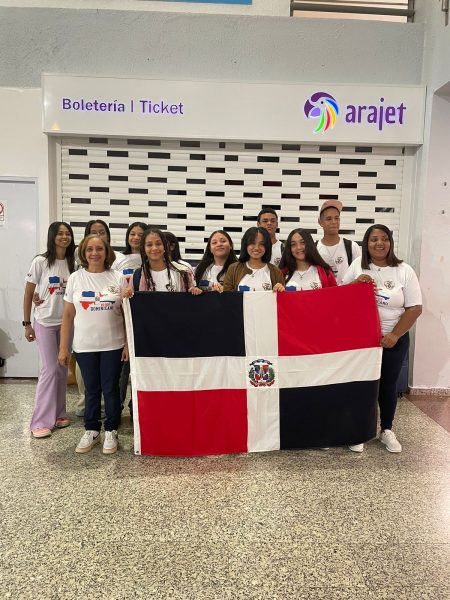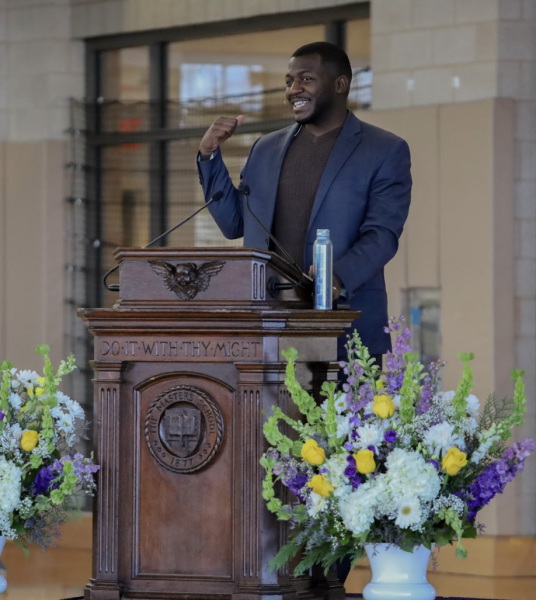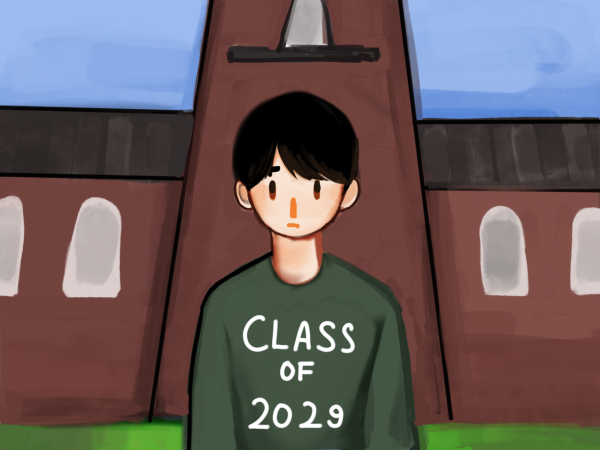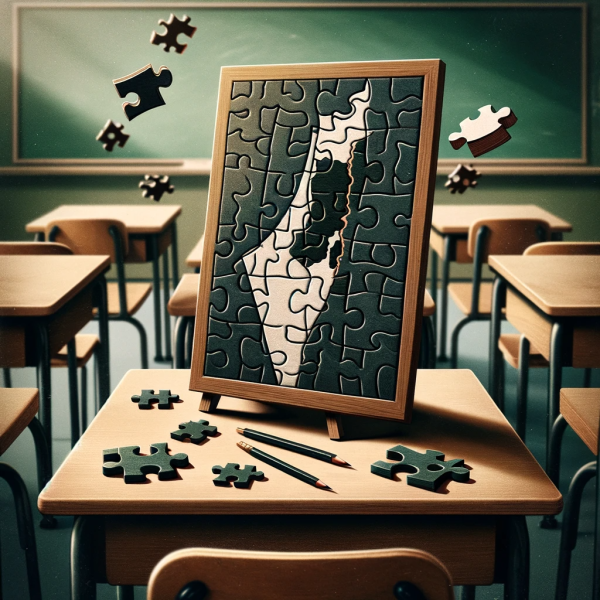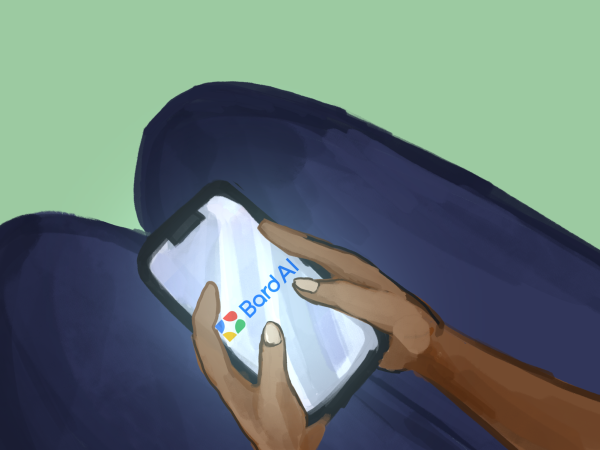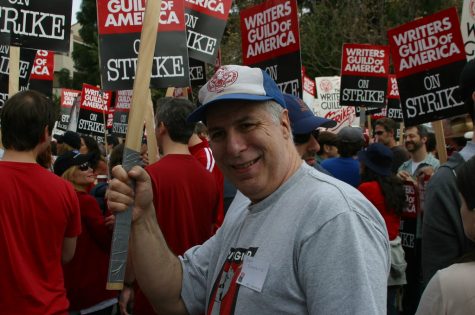One year since the start of full-scale Russian invasion: the story of Ukrainian resilience
Kyiv City State Administration
Russian missile hit the apartment building in Kyiv on March 15. The firefighters from the State Emergency Service of Ukraine worked all night to rescue the residents and extinguish the fire.
March 14, 2023
February 24, 2023 marks exactly one year since the start of the full-scale war Russia waged against Ukraine and nine years since the start of Russo-Ukrainian war. According to the U.N. Human Rights Office report, at least 8,000 civilians died as a result of the full-scale Russian invasion, and more than 13,000 were injured. The report recognised, however, that the real numbers are much higher as little information can be collected from the occupied regions or the areas with heavy fighting.
On February 21, 2022, Russian president Vladimir Putin officially declared the independence of its enclaves in the east of Ukraine: parts of Donetsk and Luhansk regions that have been occupied by Russian-backed separatists since 2014. Despite Russian officials denying any plans of invading Ukraine, about 170,000 Russian troops had been stationed along Ukrainian borders.
On Feb. 24, around 5 am, Putin officially announced the full-scale invasion of Ukraine under the name of “special military operation.” Russian missiles struck several Ukrainian cities, and Russian forces crossed Ukrainian borders with a goal of installing a puppet government in Kyiv. Amidst the rising panic and the advance of Russian forces in the east, north, and south of Ukraine, Ukrainian president Volodymyr Zelenskyi released a video of himself together with high-ranking officials in the Ukrainian capital, promising to stay in Kyiv. His alleged response to the US offer of evacuation, “I need ammunition, not a ride” became an inspiration for Ukrainians and people abroad.
[Ukrainian defense has] all been running on the shoulders of millions of volunteers who are ready to contribute their time, their money, their expertise and their lives towards the cause.
— Ihor Makhynia '24
Just like the Ukrainian president, the people of Ukraine refused to surrender. When the Russian military approached Kyiv, Ihor Makhynia ‘24 stayed in the city with his family. He recalled that because the war had been in place since 2014, most people were somewhat prepared for what unfolded. He said, “One of the Territorial Defense bases was just half a block from where I live, and people I knew my entire life joined it and helped defend [the region]. And for the first month, [my mom] was one of the few volunteers that actually kept the supplies running. And I was also with her… It’s all been running on the shoulders of millions of volunteers who are ready to contribute their time, their money, their expertise and their lives towards the cause.”
Due to Ukrainian resistance, Russian forces failed to take control of key Ukrainian cities in the first week, diminishing their prospects of blitz victory. By March, Russia was able to take control of about 30 percent of Ukrainian territory, including only one major city — Kherson. In April, Ukraine won its first significant victory: the Battle for Kyiv. Russian forces were forced to withdraw from the northern part of Ukraine, revealing the sites of mass burials, detention centers, and numerous accounts of war crimes.
In June, Russia started a blockade of Ukrainian Black Sea ports, preventing Ukrainian grain from being exported to other countries and raising the concerns of a global food crisis. Meanwhile, the Battle of Donbas brought some gains to Russia: when Ukrainian forces withdrew from Sievierodonetsk and Lysychansk, Russia gained control of the Luhansk region.
In September, Russian proxies held illegal annexation “referendums” in four Ukrainian regions (Donetsk, Luhansk, Kherson, and Zaporizhzhia). Despite much evidence of voting fraud and voting coercion, Putin announced the annexation of the four regions on September 30. Meanwhile, the successful Ukrainian counter-offensive in September and November resulted in the liberation of Kharkiv and Kherson regions. In total, 54 percent of the Ukrainian territories occupied since last February have been liberated.
In October, Russia shifted its strategy and started striking Ukrainian energy infrastructure, which led to massive blackouts in several Ukrainian regions. Four months later, Russia seized Soledar in the east of Ukraine, but the fighting for Bakhmut, another key city in the east, continues.
The story of Mariupol, a strategically important city in the south-east of Ukraine at the Azov sea, has become a face of Russian invasion, exemplifying its brutality. Russian forces dropped from 50 to 100 bombs on the city every day and cut off the residents’ access to water, food, heat, and mobile connections. During the four months of the siege, up to 90 percent of the city’s residential buildings and infrastructure have been destroyed because of constant bombardment by the Russian army.
Slovyansk, the hometown of Nataliia Kulieshova ’23, is a 5-hour car ride from Mariupol. She said, “I have a lot of family and friends who were in Mariupol back then, and it was so scary not knowing what happened to them, not being able to connect with them for months and just imagining the worst possible scenarios. And now [in] this gorgeous city that was one of my favorite cities in Ukraine, the streets that I walked a few months before [the siege], they’re completely ruined. And there’re so many massacres and war crimes that you cannot even imagine, and it’s terrifying.”
For four months, Ukrainian soldiers defended Mariupol despite being significantly outgunned, outnumbered, and practically cut off from the rest of Ukrainian forces. The Azovstal steel plant, the last Ukrainian stronghold in the city and the shelter for hundreds of civilians, became a symbol of Ukrainian resilience.
The losses and damage caused by this war is unimaginable. Since February, Russia has launched about 5000 missile strikes, 3500 air strikes, and 1000 drone attacks. Trying to escape the Russian invasion, 8 million Ukrainians fled the country and 5.9 million became internally displaced. More than 65,000 war crimes committed by Russians have been documented since February, including countless deliberate attacks on civilians and many cases of murders, detentions, and tortures of civilians in the occupied territories.
According to the latest Conflict Reseratory report, at least 6,000 Ukrainian children have been forcefully deported to Russia or Russian-controlled territories and been subjected to pro-Russian re-education. The consent of parents or children has been completely ignored, and the communication with children has been suspended. Russia was found to create a network of such re-education camps, from which Ukrainian children are then adopted by Russian families. Maria Lvova-Belova, Putin’s commissioner for the protection of children’s rights, is one of the Russian officials at the center of the scheme. In one of her recent interviews, Lvova-Belova announced that she “adopted” a child from Mariupol. The real story of the child and her family is unknown.
I feel like giving up will not just be wrong, but it also will be unfair to the people who had to lose their loved ones in this war and to people who had to witness all of the events themselves, and to people who are still being terrorized in the occupied territories.
— Nataliia Kulieshova '23
Despite the blackouts and brutal missile strikes on civilians, more than 90 percent of Ukrainians said in a recent survey that Ukraine must continue to fight against Russia. After the massacres in Kyiv and Kharkiv regions and Russian terror bombing, many Ukrainians can not allow for major concessions to be made. There is also growing skepticism about peace negotiations considering Russia’s history of using such deals to grow in power and invade again.
“We had a lot of traumatic events, but that’s exactly the reason to keep on fighting,” Kulieshova said. “If we give up right now, Russia … will keep [committing] all of the crimes that it did to us centuries ago. I feel like giving up will not just be wrong, but it also will be unfair to the people who had to lose their loved ones in this war and to people who had to witness all of the events themselves, and to people who are still being terrorized in the occupied territories.”
Russian full-scale invasion became a turning point for many Ukrainians and united the country as never before. As Zelenskyi said in his speech on February 24, 2023, “Instead of a white flag, [Ukrainians] chose the blue-yellow one.”



